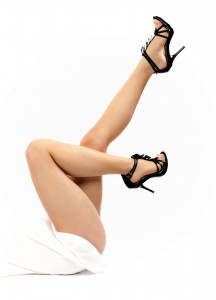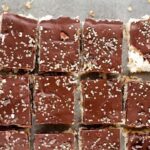8 Surefire Ways To Get Rid Of Varicose Veins
8 Surefire Ways To Get Rid Of Your Pesky Varicose Veins
Let’s make it clear once and for all – there’s not much you can do to prevent varicose veins, especially when they are inherited. And no, the herbal remedies you learn from the internet generally don’t work either. The remedies that fall under the medical myths category just lessen the swelling and aching but they don’t necessarily keep the unsightly vens away.
But just because “there’s not much” doesn’t mean “there’s nothing.” There’s still hope, so don’t give up on your legs. There are ways that work
from maintaining a healthier lifestyle to undergoing professional procedures, which can help you get rid of those painful and ugly veins and say hello to mini skirts and shorts.
What you can do:
- Keep moving
Can you develop varicose veins by doing absolutely nothing? Definitely.
While you’re reading this article, your heart is currently pumping blood into your arteries. The idea is you have to assist with the circulation by moving your calf muscles so the blood can return back to your heart. If you tend to sit at your desk all day or stand for extended periods, chances are you’re pooling blood into your veins, causing them to bulge.
With this, you have to get up and move. Simple exercises like walking, jogging, and taking stairs help boost blood circulation. If standing for prolonged hours is part of your job, then find ways to keep moving. You may shift the weight from one leg to another or raise yourself on the balls of your feet whenever possible.
Swimming is another excellent workout for pumping the blood back to your heart without having to defy gravity. Just remember that not all exercises are good for varicose veins. Weightlifting, boxing, skiing, and martial arts, which add too much pressure on your veins, are just some of the exercises that are not advised.
Do not miss: 12 Secret Exercises to Beat Sedentary Lifestyle
- Beat varicose veins with nutrition
Ideally, all vitamins are beneficial to the vein health but foods rich in flavonoids (apples, berries, grapes, and whole grains), vitamin C (broccoli, citrus fruits, peppers), and dietary fibre (asparagus, lentils, pomegranates, and beets) stand out according to research. You should also include anti-inflammatory foods such as oily fish, leafy vegetables, garlic and onions, ginger and turmeric, tomatoes, and nuts into your diet to help reduce pain and swelling.
- Manage your weight
In addition to having proper nutrition, looking closely to your weight will also help with eliminating varicose veins. Obesity, as we all know, brings nothing but bodily harm. It messes up with your circulatory system and puts a lot of weight and pressure on the veins of your legs, leading to unsightly and painful varicose veins.
- Elevate your legs
Again, prolonged static position, whether it’s by sitting or standing, calls for the development of varicose veins. Aside from moving around, you can prevent varicose veins by elevating your legs whenever possible – even during your resting periods.
While you’re sitting at your desk, place your legs on a stool at a comfortable height then move your underworked ankles in a circular motion and up and down. You should also elevate your legs after long walks and long periods of standing to improve circulation. While lying on your back, place a foam leg pillow or a couple of books on the foot side of the bed and put your feet on it. Your feet should be positioned higher than your chest.
- Use compression stockings
You should never apply pressure on your legs – unless you’re doing it with compression stockings. The gentle pressure brought by these specially designed stockings compresses the veins and reduces their diameter. The stockings also serve as a support for the venous walls which facilitates better blood flow and reduces the risk of blood clot formation and stagnation. However, it’s always best to seek medical advice first as to which type of compression stockings is suited to your condition.
What a vein specialist can do:
When self-care regimens don’t work, it’s time to seek the experts.
- Sclerotherapy
Topping the charts is Sclerotherapy, the most popular and the most effective treatment for varicose and spider veins. The “gold standard” procedure consists of injecting the affected veins with a solution made out of fatty acids, glycerin, and salt. The treatment collapses the veins, causes them to fade, and allows blood to flow back safely into the bloodstream. In most cases, two to three treatments are recommended to achieve optimum results.
- Cryo-sclerotherapy
When there’s no other way but to face the terrifying syringes, varicose veins patients opt for the non-invasive cryco-sclerotherapy. Also called cryotherapy, this painless version of sclerotherapy uses a machine that delivers short blasts of super-cooled air to numb the skin before you are injected. The cooling procedure also helps reduce inflammation during the injections.
- Foam Sclerotherapy
If you have larger veins, you may consider foam sclerotherapy. The breakthrough involves injecting “foamed sclerosant drugs” which are made out of a standard sclerosant mixed with air or a physiological gas (carbon dioxide). In other words, foam sclerotherapy uses foam instead of liquid to thicken the vessel wall and seal off the blood flow.
Author Bio:
Carmina Natividad is one of the daytime writers for North Shore Vein Clinic, a prominent group of vein specialists based in Sydney, Australia. Her articles mainly include practical tips on health, fitness, and beauty






Leave a Reply